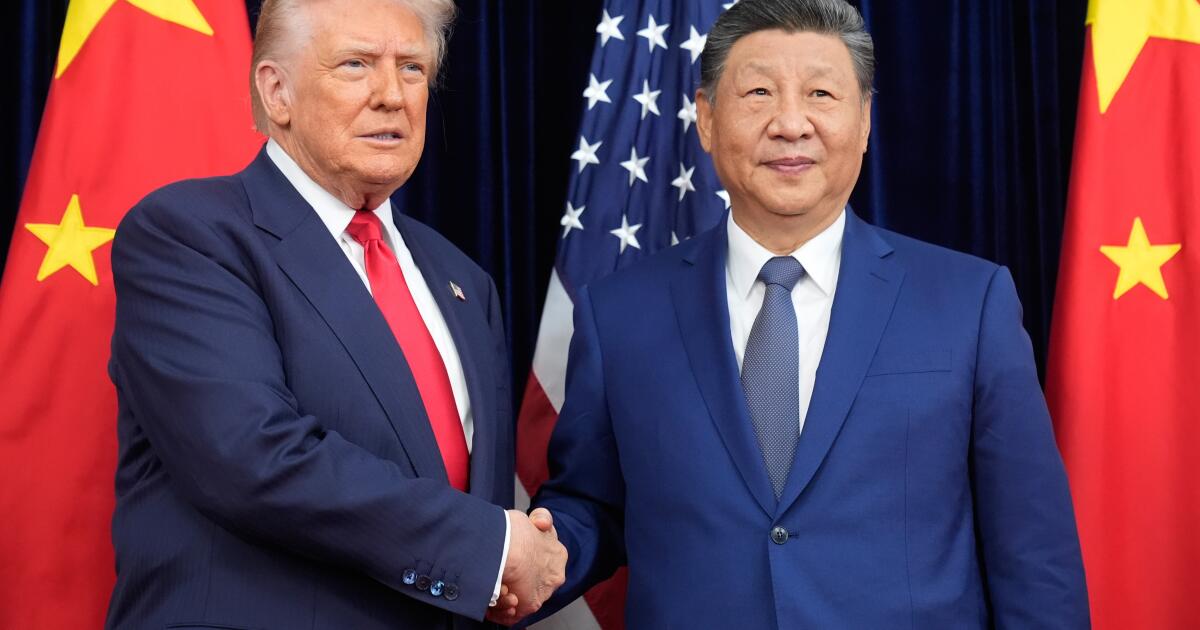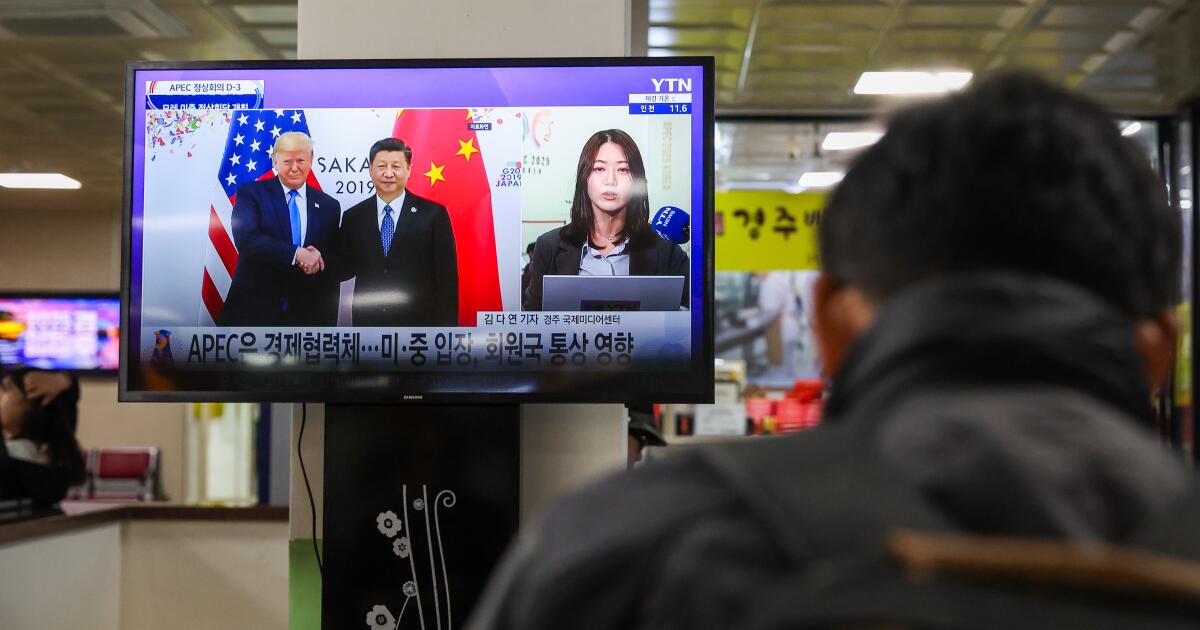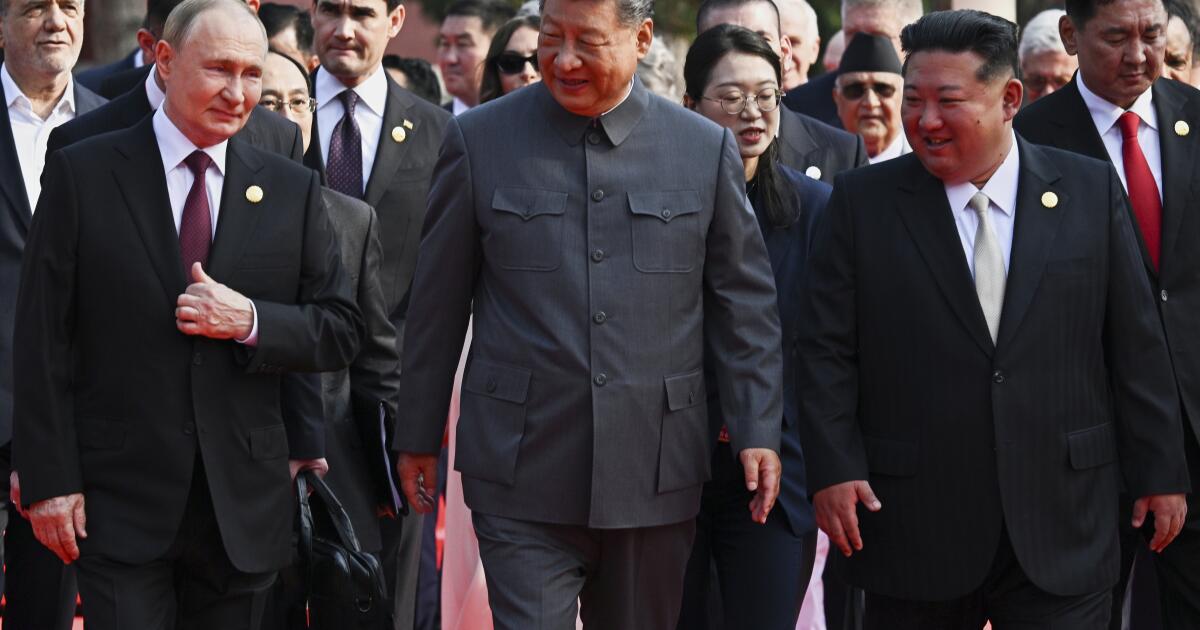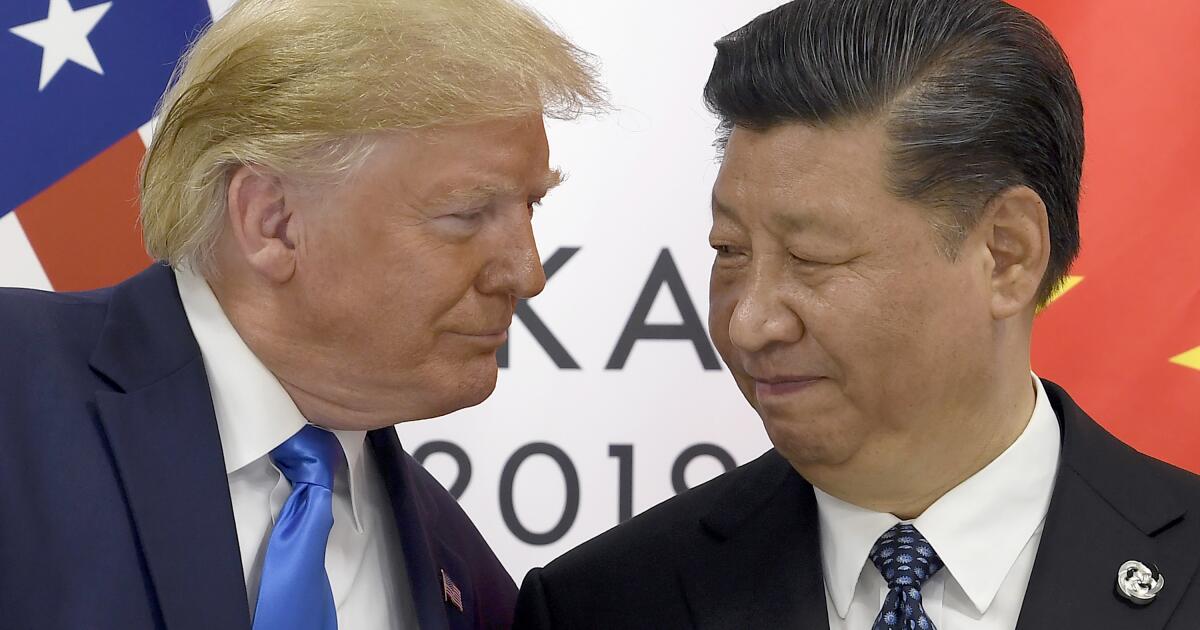Trump cuts tariffs on China after meeting Xi in South Korea
ABOARD AIR FORCE ONE — President Trump described his face-to-face with Chinese leader Xi Jinping on Thursday as a roaring success, saying he would cut tariffs on China, while Beijing had agreed to allow the export of rare earth elements and start buying American soybeans.
The president told reporters aboard Air Force One that the U.S. would lower tariffs implemented earlier this year as punishment on China for its selling of chemicals used to make fentanyl from 20% to 10%. That brings the total combined tariff rate on China down from 57% to 47%
“I guess on the scale from 0 to 10, with ten being the best, I would say the meeting was a 12,” Trump said. “I think it was a 12.”
Treasury Secretary Scott Bessent said China agreed to purchase 25 million metric tons of U.S. soybeans annually for the next three years, starting with 12 million metric tons from now to January. U.S. soybean exports to China, a huge market for them, had come to a standstill in the trade dispute.
“So you know, our great soybean farmers, who the Chinese used as political pawns, that’s off the table, and they should prosper in the years to come,” Bessent told Fox Business Network’s “Mornings with Maria.”
Trump said that he would go to China in April and Xi would come to the U.S. “some time after that.” The president said they also discussed the export of more advanced computer chips to China, saying that Nvidia would be in talks with Chinese officials.
Trump said he could sign a trade deal with China “pretty soon.”
Xi said Washington and Beijing would work to finalize their agreements to provide “peace of mind” to both countries and the rest of the world, according to a report on the meeting distributed by state media.
“Both sides should take the long-term perspective into account, focusing on the benefits of cooperation rather than falling into a vicious cycle of mutual retaliation,” he said.
Sources of tension remain
Despite Trump’s optimism after a 100-minute meeting with Xi in South Korea, there continues to be the potential for major tensions between the world’s two largest economies. Both nations are seeking dominant places in manufacturing, developing emerging technologies such as artificial intelligence, and shaping world affairs like Russia’s war in Ukraine.
Trump’s aggressive use of tariffs since returning to the White House for a second term, combined with China’s retaliatory limits on exports of rare earth elements, gave the meeting newfound urgency. There is a mutual recognition that neither side wants to risk blowing up the world economy in ways that could jeopardize their own country’s fortunes.
When the two were seated at the start of the meeting, Xi read prepared remarks that stressed a willingness to work together despite differences.
“Given our different national conditions, we do not always see eye to eye with each other,” he said through a translator. “It is normal for the two leading economies of the world to have frictions now and then.”
There was a slight difference in translation as China’s Xinhua News Agency reported Xi as telling Trump that having some differences is inevitable.
Finding ways to lower the temperature
The leaders met in Busan, South Korea, a port city about 47 miles south from Gyeongju, the main venue for the Asia-Pacific Economic Cooperation summit.
In the days leading up to the meeting, U.S. officials signaled that Trump did not intend to make good on a recent threat to impose an additional 100% import tax on Chinese goods, and China showed signs it was willing to relax its export controls on rare earths and also buy soybeans from America.
Officials from both countries met earlier this week in Kuala Lumpur to lay the groundwork for their leaders. Afterward, China’s top trade negotiator Li Chenggang said they had reached a “preliminary consensus,” a statement affirmed by U.S. Treasury Secretary Scott Bessent who said there was “ a very successful framework.”
Shortly before the meeting on Thursday, Trump posted on Truth Social that the meeting would be the “G2,” a recognition of America and China’s status as the world’s biggest economies. The Group of Seven and Group of 20 are other forums of industrialized nations.
But while those summits often happen at luxury spaces, this meeting took place in humbler surroundings: Trump and Xi met in a small gray building with a blue roof on a military base adjacent to Busan’s international airport.
The anticipated detente has given investors and businesses caught between the two nations a sense of relief. The U.S. stock market has climbed on the hopes of a trade framework coming out of the meeting.
Pressure points remain for both U.S. and China
Trump has outward confidence that the grounds for a deal are in place, but previous negotiations with China this year in Geneva, Switzerland and London had a start-stop quality to them. The initial promise of progress has repeatedly given way to both countries seeking a better position against the other.
“The proposed deal on the table fits the pattern we’ve seen all year: short-term stabilization dressed up as strategic progress,” said Craig Singleton, senior director of the China program at the Foundation for Defense of Democracies. “Both sides are managing volatility, calibrating just enough cooperation to avert crisis while the deeper rivalry endures.”
The U.S. and China have each shown they believe they have levers to pressure the other, and the past year has demonstrated that tentative steps forward can be short-lived.
For Trump, that pressure comes from tariffs.
China had faced new tariffs this year totaling 30%, of which 20% were tied to its role in fentanyl production. But the tariff rates have been volatile. In April, he announced plans to jack the rate on Chinese goods to 145%, only to abandon those plans as markets recoiled.
Then, on Oct. 10, Trump threatened a 100% import tax because of China’s rare earth restrictions. That figure, including past tariffs, would now be 47% “effective immediately,” Trump told reporters on Thursday.
Xi has his own chokehold on the world economy because China is the top producer and processor of the rare earth minerals needed to make fighter jets, robots, electric vehicles and other high-tech products.
China had tightened export restrictions on Oct. 9, repeating a cycle in which each nation jockeys for an edge only to back down after more trade talks.
What might also matter is what happens directly after their talks. Trump plans to return to Washington, while Xi plans to stay on in South Korea to meet with regional leaders during the Asia-Pacific Economic Cooperation summit, which officially begins on Friday.
“Xi sees an opportunity to position China as a reliable partner and bolster bilateral and multilateral relations with countries frustrated by the U.S. administration’s tariff policy,” said Jay Truesdale, a former State Department official who is CEO of TD International, a risk and intelligence advisory firm.
Boak, Megerian and Schiefelbein write for the Associated Press. Boak reported from Tokyo and Megerian reported from Busan, South Korea. Ken Moritsugu in Beijing and Seung Min Kim and Michelle Price in Washington contributed to this report.




